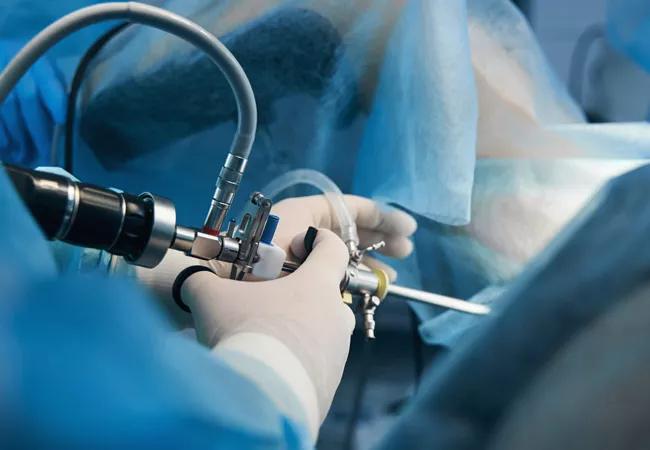Advertisement
A veteran gynecologic surgeon advocates for in-the-office hysteroscopy

Hysteroscopy offers a minimally invasive way to evaluate intrauterine pathology, yet only 15%-25% of gynecologists in the United States currently offer the procedure in their offices.
Advertisement
Cleveland Clinic is a non-profit academic medical center. Advertising on our site helps support our mission. We do not endorse non-Cleveland Clinic products or services. Policy
“Gynecologists have not embraced direct scoping evaluation the way other specialties have,” says Linda Bradley, MD, a gynecologic surgeon at Cleveland Clinic. “If you repeatedly had blood in your stool, a doctor would do a sigmoidoscopy or a colonoscopy. If you consistently had blood in your urine, you would get a cystoscopy. I want to open doors and get physicians to embrace office hysteroscopies.” To help achieve that goal, Dr. Bradley published an article presenting best practices for implementation of office hysteroscopy in the September 2022 issue of Obstetrics & Gynecology.
Indications for hysteroscopies include symptomatic abnormal uterine bleeding, unexplained infertility, recurrent miscarriages, leukorrhea and suspected retained products of conception or foreign bodies. Traditionally, other procedures have been used to assess these conditions.
The standard of care for evaluating the endometrial cavity has been blind dilation and curettage or biopsy. However, both procedures sample only a portion of the endometrium and have low sensitivity for focal lesions. Hysteroscopy allows for direct inspection and uninterrupted visualization, and it can facilitate visually directed curettage.
Similarly, transvaginal ultrasonography and saline infusion ultrasonography are often used for evaluating endometrial disorders and intracavitary masses. Hysteroscopy is a more sensitive and specific imaging modality. “If we miss a diagnosis, women continue to suffer,” says Dr. Bradley. “Office evaluation using a hysteroscope is so critical to making a diagnosis and selecting the right procedure, tools and equipment to treat patients.”
The advent of miniaturized, flexible hysteroscopes has made in-office visualization of the endometrial cavity, cervix and proximal tubal ostia a more viable option that can streamline care, reduce financial and logistic barriers, and prevent unnecessary procedures.
“It’s safe, easy, quick and gives you a reliable diagnosis,” says Dr. Bradley, who performs approximately 700 hysteroscopies a year. She offers several strategies for implementation of the procedure, including the following:
Advertisement
As a vocal advocate for office hysteroscopies, Dr. Bradley borrows her final message for gynecologists from Nike: Just do it. “Learn it, do it and pass it on,” she says.
There are many ways to get trained on the procedure, including apprenticeships, participation in hands-on simulation, and through regional and national conferences.
“We need to consider our patients – the women at the end of the speculum,” says Dr. Bradley. “My hysteroscope is my stethoscope when it comes to evaluating intrauterine pathology.”
Advertisement
Advertisement

VMS in menopausal women can lead to adverse health outcomes

Mode of delivery does not affect patient satisfaction

Education, lifestyle modifications and new drug therapies can help

Multidisciplinary approach key to optimizing outcomes

Newer drugs can affect likelihood of pregnancy

Surgical video highlights techniques for optimizing myomectomy

Blood test along with ultrasound is beneficial for twin pregnancies

Trial examines novel approach for a disease with a high mortality rate